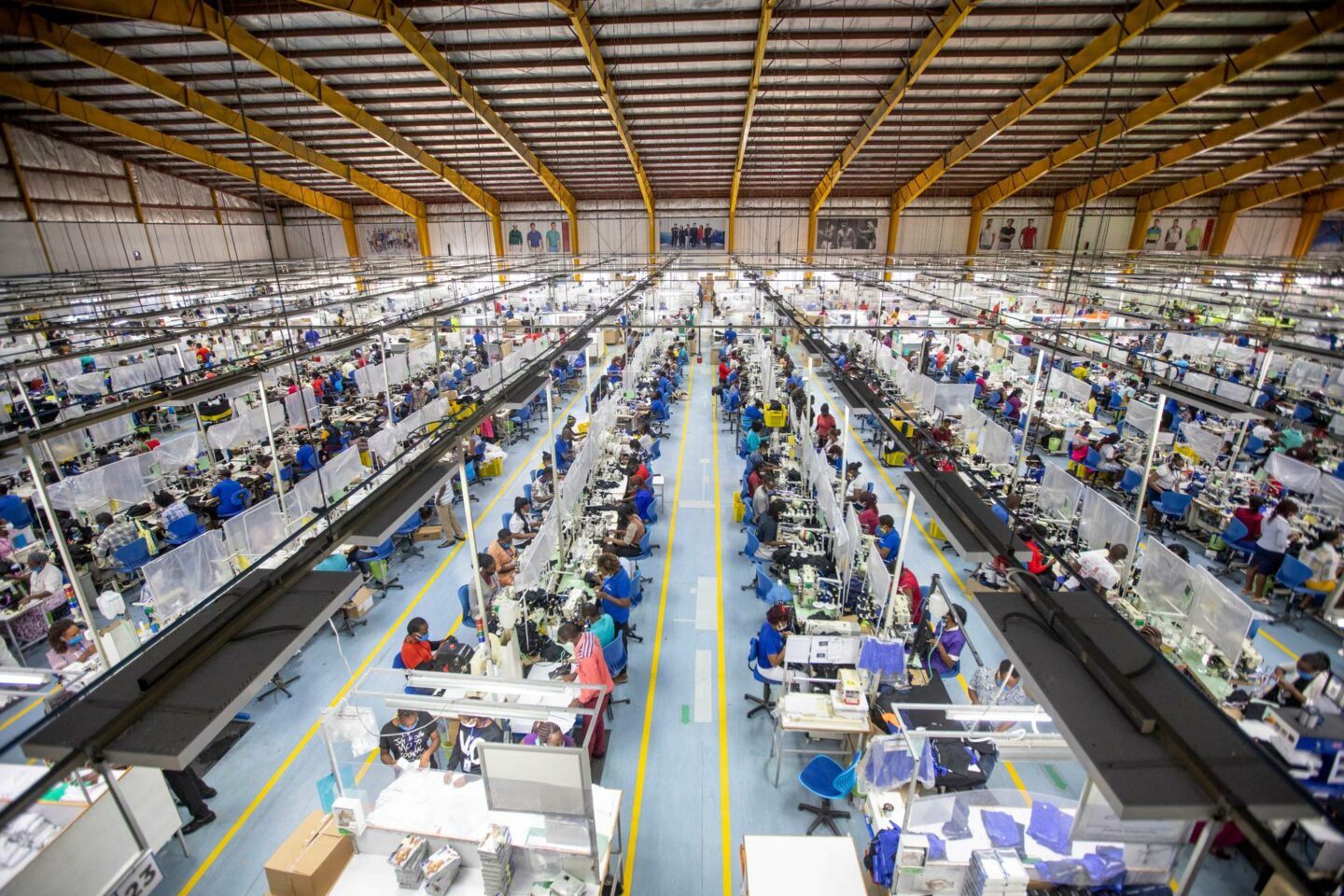Sustaining Inclusive Growth: Why Sectors Matter

Evidence has shown that targeted intervention to grow more productive sectors or clusters can be a powerful driver of inclusive growth and play a key role in kickstarting economic transformation, even when broader economic conditions are unfavourable.
In recent decades, many African economies have experienced relatively high GDP growth rates, averaging 4% since 2000. However, with high population growth rates averaging 2.7% over the same period1 and persistent levels of inequality, this growth has not delivered substantial declines in the number of people living in poverty on the continent.
A country’s ability to improve its standard of living over the long term depends almost entirely on its ability to raise its output per worker. This is because wages, and hence incomes, are largely determined by the value a worker can contribute. Raising output per worker generally requires moving labour into the production of higher-value products and services but can also be achieved by producing current goods and services more efficiently, for example, through the increasing application of technology.
Across Sub-Saharan Africa, countries’ merchandise exports remain heavily concentrated (76%) on agricultural commodities, extractives and other primary goods, while domestic economies are dominated by low-value agriculture and informal services. This lack of diversification into higher-value products and services is hindering productivity growth and, therefore, income increases.
The need to focus on moving labour in an economy from low- to higher-productivity sectors is not currently at the forefront of global development discourse. While macro-economic stability is important, commonly prescribed policy measures to restore fiscal or trade imbalances – such as spending cuts, interest rate hikes, or currency devaluations – do not shift an economy’s underlying structure or explicitly encourage productivity growth within sectors.
Much needed global pressure and funding to tackle environmental issues is encouraging countries to focus on adaptation to ensure the resilience of their current production but without sufficient focus on building Africa’s capabilities to produce higher value goods and services in a new lower emissions world.
Economywide productivity growth is generally initiated and driven by the growth of a handful of higher value-added sectors
Raising productivity may sound like a lofty goal in contexts where fiscal space is already squeezed, and governments are struggling to respond to climate shocks and cost-of-living pressures. However, successful cases of economic transformation reveal an important lesson: economywide productivity growth is generally driven by the growth of a handful of more productive sectors. From electronics in Vietnam, to outsourcing in India, to high-value agricultural products in Chile, and textiles in Mauritius, numerous case studies demonstrate how the targeted development of productive sectors plays a key role in the broader transformation of economies.
These sector-specific approaches were broad enough to trigger meaningful change, yet focused enough to ensure a set of stakeholders with common interests could coalesce behind a shared vision. Crucially, sectors have been able to take off even where wider economic conditions were unfavourable – as in Bangladesh’s garments sector. This has important implications for policymakers and support actors.
Targeted actions in high-potential sectors can have a transformational impact
To raise economywide productivity, it is not necessary to reform all parts of the economy at once. Higher productivity growth in select sectors can drive up aggregate demand, which in turn can drive up wages across the economy. If sectors are well-chosen based on demand and potential for competitiveness, they can deliver tangible results- creating jobs, generating foreign exchange, and raising revenue.
Several challenges frustrate efforts by African leaders to unlock the growth of high-potential sectors
Many African leaders recognise that raising the productivity of their economies – and therefore the living standards of their citizens – will depend on fostering the growth of high-potential sectors, rather than relying solely on general efforts to improve infrastructure, skills, or the business environment. However, several factors frustrate this agenda.
First, for as long as their headline macroeconomic indicators raise alarm bells, governments remain under pressure to cut spending, raise interest rates, or devalue currencies. These contractionary measures reduce their capacity to invest in building productive capabilities and risk stalling the growth of nascent sectors.
Second, despite a new era of industrial policy underway in rich countries, trade rules and loan conditionalities limit the policy space available to African countries.
Third, mainstream economic thinking in Africa since the Washington Consensus has led to a hollowing out of the government capabilities that are needed to implement modern industrial policy effectively.
This holds back collaboration by governments with those who develop a country’s productive capacity in the first place: the private sector.
Effective collaboration between governments and dynamic businesses is key for domestic value-addition
This highlights a crucial point. Ultimately, productivity growth takes place within firms. In some sector growth stories, take-off was driven by firms seizing a market opportunity without any upfront government intent or support. In other instances, governments were the first movers in selecting sectors and growing them from a standing start. This was true for steel in South Korea, microprocessors in Costa Rica, or tourism in Rwanda.
Regardless of the initial trigger, across all sector success stories, achieving sustained competitiveness and widespread benefits hinged on constructive collaboration between the public and private sectors.
African success stories show constraints can be overcome
Despite the constraints, many African governments are making headway in collaborating with the private sector to shift their economies into more productive sectors and activities.
Morocco and South Africa have attracted global manufacturers to upgrade their automotive sectors.
Ethiopia and Senegal have used investments in industrial parks to grow their textiles industries.
Côte d’Ivoire is building productive capabilities to add value to its cashew and cocoa.
Here in East Africa, President Hassan of Tanzania has reorganised her government to “ruthlessly prioritise” sectors and activities based on their potential to deliver inclusive prosperity.
Meanwhile, East African high-growth sectors such as aquaculture have taken off thanks to the investments of pioneer firms. Government actions to coordinate and regulate now offer to build the resilience of this growth.
Successful industrial strategy takes time. As the global economy faces ongoing challenges, it is crucial that these efforts are supported and built on, rather than undermined.
Unlocking productive sectors is vital not only for growing economies out of macroeconomic risk, but more importantly for raising living standards and realising the aspirations of the continent’s citizens.





